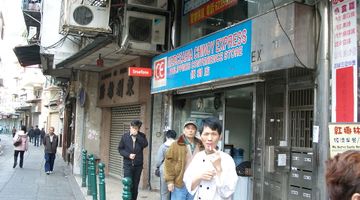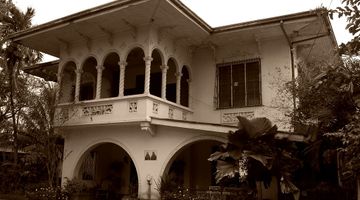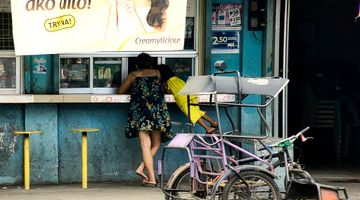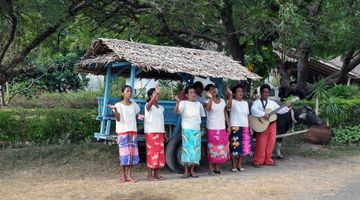Choosing Travel Insurance for The Philippines
Before visiting the Philippines, traveller insurance is one of the most important things you should consider. Many travelers feel that the Philippine travel insurance isn’t necessary or a waste of money, but the truth is you really never know if an emergency is going to happen. It’s always best to ensure you’re protected and have the coverage needed when you need it. In this article, we’ll go over the facts you need to know about travel insurance for the Philippines.
Is travel insurance necessary for the Philippines? Where to buy it?
There’s no right or wrong answer – the truth is, it depends. Many travelers visit the Philippines for a few short days through an organized tour, and in this case it is usually not necessary to buy it separately as it is included into your tour price. But if you intend to visit the many islands that the Philippines has to offer, or intend to spend over two weeks in the country, it’s recommended to buy insurance especially if you’d like some peace of mind.
The Philippines is prone to its fair share of dangers. Traffic, especially in the large cities of the Philippines such as in Metro Manila and Cebu, can be horrendous and make you vulnerable to accidents. Off-the-beaten track destinations in the Philippines may be attractive and offer exciting experiences, but it also means you’ll be far away from a modern hospital or embassy should anything happen. What’s more, the Philippines is prone to suffering from natural disasters especially strong typhoons that plague the country a few times each year. It’s not uncommon for airlines to change or delay flights even without notice, so you always want to make sure that you’re prepared.
One of the best travel insurance tips is to do your research online. There are several dozen reputable companies that you can find on the internet offering a wide range of coverage packages for travelers. If you are on a budget, travel insurance doesn’t have to break the bank – there are many low cost travel insurance packages available online. Other great places to ask about travel insurance for your trip to the Philippines include your bank, your credit card company, and international travel insurance comparison sites.
Ideally, spend a day or two thoroughly researching packages for travel insurance information in the Philippines as you get to know the fine print and policies very carefully. If you are going to book travel insurance with a company in your home country, it’s best to check if they cover travel to the Philippines. Before you finalize an insurance package, check with customer testimonials or reviews. See what other travelers say online about the best healthcare providers before making a decision.
How to choose appropriate travel insurance for the Philippines?
If you are going to do a lot of inter-island traveling and take several flights within the Philippines, make sure that your travel insurance includes flight delays, cancellations, and lost baggage. Budget airlines in the Philippines are notorious for consistent delays and cancellations, so you always want to make sure that you’re prepared for the worst. The last thing you want on a tropical holiday to the Philippines is to be stuck in a remote island without access to any modern amenities due to flight changes.
When inquiring about health insurance, it’s also important to have medical expenses covered. In the case of an emergency, this coverage will take care of the costs of surgical or emergency medical treatment that you may have had to do while you’re in the Philippines. More comprehensive plans from travel insurance companies can also include money (replacement of lost money or equivalent in the form of traveler’s checks or pre-paid tickets if it’s lost or stolen), loss of passport (provides coverage for any additional accommodation and travel expenses that arise as a result of needing to replace a lost passport), and terrorism (covers your emergency or medical costs in the event of terrorism).
It is recommended to get adventure travel insurance plans if you intend to engage in potentially risky activities while you’re in the Philippines. Some insurance companies can cover a number of adventure-based activities such as scuba diving, surfing, kite surfing, canoeing, snorkeling, white water rafting, stand up paddle boarding, and wakeboarding; all of which can be done in the Philippines. Mountain activities are also popular in the Philippines, although they are considered risky activities so you should consider travel insurance for these instances as well. Mountain activities include sightseeing in caves, mountain biking, trekking, and hiking. These activities will require you to pay a premium to ensure that you’re protected when you engage in extreme activities.
It’s also a good idea to get travel insurance that covers emergency evacuation, a situation that should be exclusive from medical coverage. This kind of coverage can save your life if you break a leg while hiking, or if a natural disaster strikes and you need to be evacuated to a safe place. It also pays to consider evacuation from a hospital in the Philippines to your home country.
Ideally, good policies are comprehensive enough to cover: injury and sudden illness, 24-hour emergency services, lost, damaged, and stolen property, cancellations for hotels and flights, sudden illness or death in the family, natural disasters in the Philippines, and protection in case the company you are using goes bankrupt during your visit to the Philippines.
Likewise, it’s important to understand what is and isn’t included in your plan. Policies don’t cover drug and alcohol-related accidents, or problems that ensue due to recklessness.
What to do in the event of an insured accident?
Get in touch with the insurance company as soon as you find out that you need medical attention. They should be able to give you advice on the next steps you can take as well as any other necessary insurance information that you should be aware of.
Keep in mind that it’s critical for you to keep all documentation related to your situation. This includes receipts and bills, as well as any official reports and photographs of an emergency or injury. It’s standard procedure for insurance companies to require documentation before they can process your claims; otherwise they won’t cover your costs.
In the event of loss of property, keep all reports of the possessions you had with you on your trip. It is always a good idea to keep police reports if you are a victim of theft in order to properly make a claim with insurance companies.
The level of health care in the Philippines
Health care in Metro Manila hospitals are at par with international standards. Private hospitals in Metro Manila are very good; these include the Makati Medical Center, St. Luke’s Hospital in Bonifacio Global City, St. Luke’s Medical Center, and Asian Hospital. Many of these hospitals employ foreign doctors, so it’s easy to find the care that you need. They are also equipped with state-of-the-art medical equipment and have doctors covering just about any kind of care that you need. Cebu and Davao’s big private hospitals are also good. Most doctors and nurses can communicate well in English. Should you get into a medical emergency if you are in Manila, Cebu, or Davao, you will be in good hands.
However, many of the Philippines’ most popular destinations also happen to be remote with an absence of quality medical infrastructure. Provincial areas have smaller private hospitals as well as public hospitals, but the medical services provided still leave much to be desired. Additionally, don’t expect to be met by an English-speaking doctor if you are in a far-flung area somewhere in the country. If you find yourself in this situation, your best bet is to fly or take a boat to Manila, Cebu, or Davao – whichever is in closer proximity to you. The typical consultation fee in good hospitals is around $15 to $20. Blood tests cost around $10 and up, although this price increases significantly if you need to have major tests or a scan done.
Pharmacies are easily found throughout the Philippines. It is generally easy to find the medications that you need in pharmacies located in big cities such as those in Manila, Cebu, and Davao. The situation is different in provincial, coastal, and remote areas: pharmacies may be difficult to find and if they do exist, only carry a small quantity of medicines. If you are traveling to the outskirts of the Philippines, your best bet is to bring medicines along with you especially if you have a certain condition.
Conclusion
If you’re planning to visit the Philippines, purchasing travel insurance should be made with your own judgment call. Think about the situations you may possibly be exposed to, as well as your health. Do some research about the exact destinations in the Philippines you’ll be visiting, and the kind of medical care you can expect to receive there. If you are going to engage in extreme or risky activities, or travel to a remote area, getting travel insurance may be a good idea – it will all depend on you.

































































